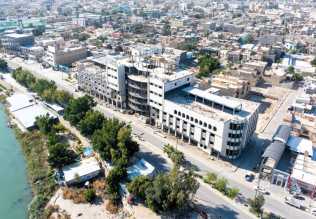Because radical reactions involve structures not seen on “standard” mechanisms , the elementary steps involved are different from standard elementary steps. There are four common elementary steps:
(a) Homolysis
As outlined in the previous section, homolysis involves the splitting of a bond down the middle to produce two radicals. This is usually how radicals are generated; this means nearly all radical reactions begin with this.

(b) Radical coupling
This is simply the reverse of homolysis – two unpaired electrons come together and make a bond. Most radical mechanisms have this as a terminating step – the step that ends a chain reaction.

(c) Bimolecular homolytic substitution (SH2)
This is the radical equivalent of the SN2 step in “normal” mechanisms. This step is very common in the propagation steps of a radical mechanism – the main part of the mechanism – and it’s usually where the useful bond-making step occurs.

(d) Radical addition
This is analogous to nucleophilic addition in “normal” mechanisms This step is usually the key step in traditional radical polymerization reactions, such as formation of polystyrene.

















